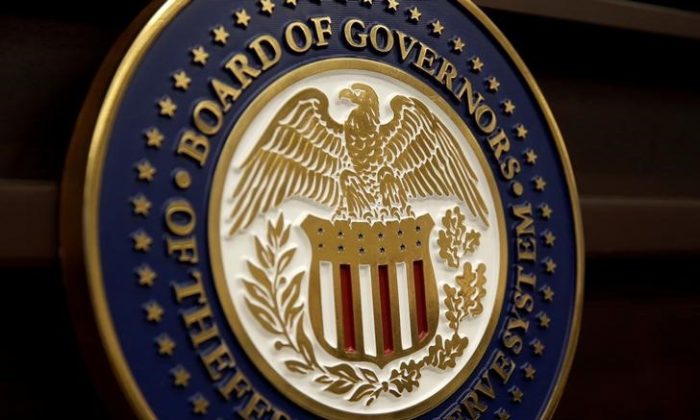
Commentary
Rate hikes tend to shock the financial markets, both faster and more decisively, than they affect the wider economy. That effect on markets, in turn, can slow the consumer economy—usually the biggest part of GDP—because it negatively affects the wealth effect, the propensity of people to spend more because their assets are worth more. Rate increases also tend to move across credit markets, affecting everything from commercial paper to adjustable rate mortgages when they re-set. effects are nearly instantaneous and can sometimes have an acute and disruptive effect on the economy.
Nevertheless, that’s the prescription, or seemingly so, more or less, to fight inflation from Larry Summers, arguably the most prominent Democrat economist of his generation. Summers told Bloomberg’s “Wall Street Week” that “the real interest rate (“r-star” or “r*” among economists), as calculated by inflation expectations and market rates, is at its lowest ever; way below negative three percent, closer to negative four percent.” Summers said there was no reason not to rapidly end the Fed’s purchase of Treasurys and mortgage securities.
Moreover, Summers said he “would be signaling four rate increases next year—with two-sided uncertainty (i.e., opaque positioning between the markets and the Fed)—depending on how the inflation figures work out. That will be a jolt. But a jolt is what is required to restore credibility.”
I’m of the view that the economy has yet to show itself to be sufficiently resilient to handle that kind of a jolt. Moreover, there are some disconcerting gray swans that could have deeply adverse effects on the economy, like the buildup of Russian troops on the eastern border of Ukraine, speculation that Iran is enriching Uranium up to weapons grade, and the Chinese Communist Party’s ongoing diplomatic and tactical belligerence.
A better option, given the nebulous outlook, would be for the Fed to address the root cause of inflation: too much money in the economy.
While there is certainly an element of what is called “demand-pull inflation,” caused by real or perceived supply chain shortages, and the five year inflation expectation is running slightly above the Fed’s 2 percent target, the underlying cause of inflation is as I quoted Milton Friedman last week: “Inflation is always and everywhere a monetary phenomenon.”
We have more than a third more money, as measured by M2, in the economy than we did before the pandemic. In a low interest rate environment, most of that money has only four places to go in pursuit of returns: equity investments, real estate, collectibles, and the new assets, cryptos, and NFTs. (And even the first of those is overvalued; worse than in the “Dot Com” bubble of the early 2000’s, according to Charlie Munger of Berkshire-Hathaway.)
To address that proximate cause of inflation—too much money in the economy, more so than low rates—the Fed should signal a rapid end to its asset purchase program, perhaps as early as January. (I agree with Summers, and with retiring Fed Governor Randal Quarles, who told the American Enterprise Institute last week that it should end even earlier for mortgage securities.)
But after completing the taper, or maybe even as it does so, the Fed should signal that it has started selling the assets it’s been buying since March, 2020, to “Hoover-up” the economy’s excess cash. Bring it back to the Fed, slowly and strategically, to reduce the size of the Fed balance sheet that’s exploded from less than a trillion dollars at the start of the 2008 financial crisis to now over $8.6 trillion.
This won’t have the same kind of “shock and awe” on the markets that the four rate hikes that Summers “sort of” suggests, and it will result in a longer tail for inflation, perhaps extending as far as 2024/2025, depending on the circumstances.
But the longer tail of inflation is less likely to hammer the financial markets, cause acute business failures, and add to unemployment than four—or any—rate hikes would.
Instead, selling assets will prudently ramp down the money supply, the proximate cause of inflation; increase medium and longer-term interest rates at a measured pace, in the same fashion that Federal Open Market Commission sales work on shorter-term rates; and gradually allow the economy to return to normalcy with a reduced Fed balance sheet.
Selling Fed assets back to the market will also gradually widen the yield curve, and signal that the Fed is returning to normal by raising longer term rates. This will allow businesses and governments sufficient time to choose to either speed up major capital investments (thereby boosting GDP) or to abandon plans for capital spends well before they would be locked into a losing capital investment. (With a rate hike, capital investment plans that don’t come in under their hurdle rate of return are shut down almost immediately.)
Finally, selling Fed assets back to the market allows a more flexible monetary response than a rate hike, should things happen to go south in Ukraine, the Central Asia, or East Asia and the China Seas. Sales can be increased, decreased, or ceased completely depending on the effect on the economy should any of those contingencies develop.
Sometimes, a measured, cautious, holistic, approach to monetary policy works better than shock therapy. And it tends to avoid the adverse side effects of more aggressive treatment.
Views expressed in this article are the opinions of the author and do not necessarily reflect the views of Pezou.
Pezou : Federal Reserve: Use Care to Rein In Inflation